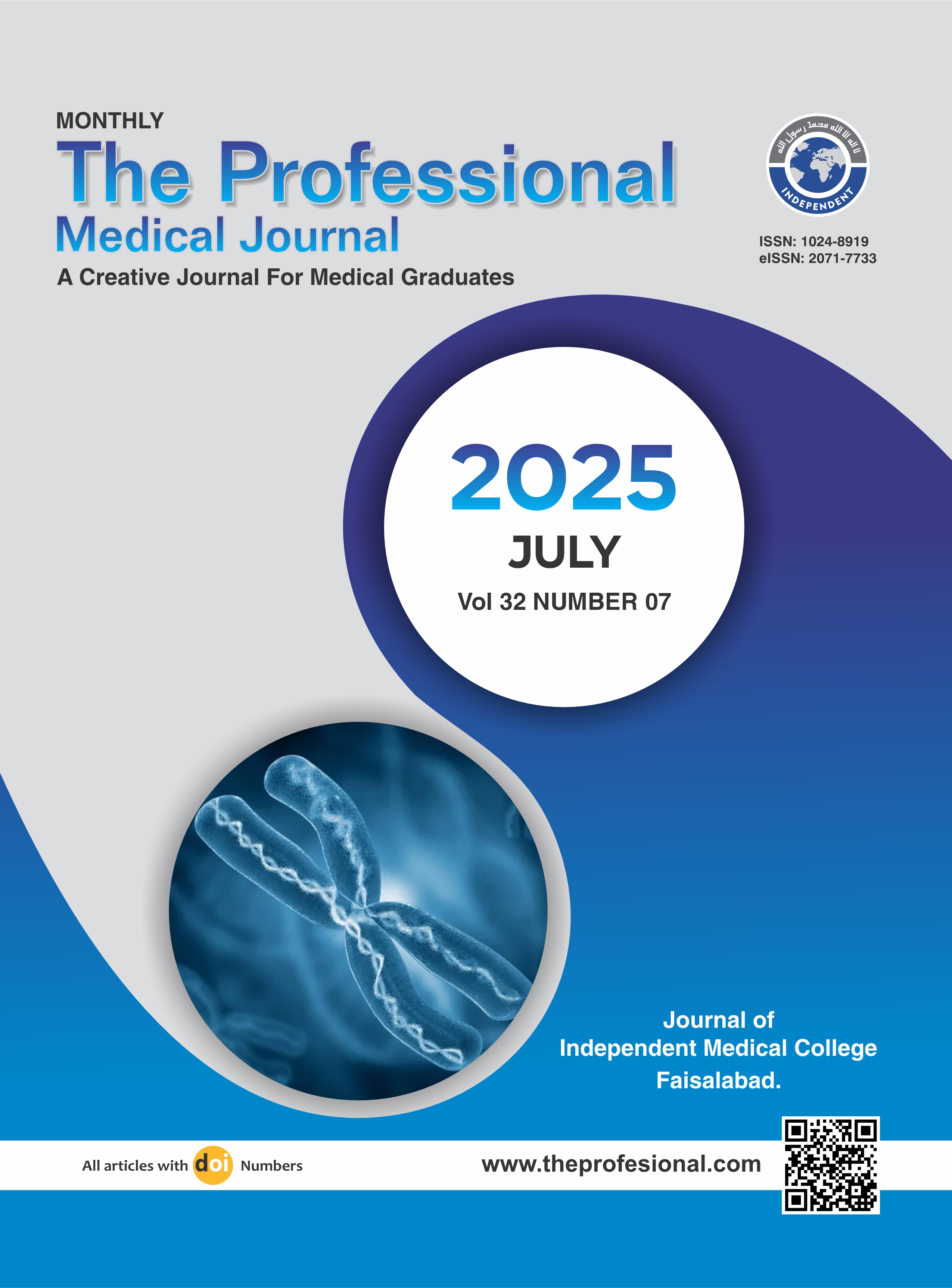Frequency of iron deficiency anemia in children presenting with helicobacter pylori infection at a Tertiary Care Hospital, Karachi, Pakistan.
DOI:
https://doi.org/10.29309/TPMJ/2025.32.07.9332Keywords:
Education, Employment, Family Income, Helicobacter Pylori, Iron DeficiencyAbstract
Objective: To determine the frequency of iron deficiency anemia (IDA) in children presenting with Helicobacter pylori (H. pylori) infection at a Tertiary Care Hospital, Karachi, Pakistan. Study Design: Cross-sectional study. Setting: Department of Pediatrics, Memon Medical Institute Hospital, Karachi, Pakistan. Period: April 2024 to September 2024. Methods: A total of 184 children of either gender, aged 2-14 years, and presenting with H. pylori were analyzed. Brief history including symptoms of the disease were taken along with demographic data which included parent’s information (educational status and socioeconomic status). IDA was labeled as hemoglobin<11 g/dl, serum ferritin<10 ng/ml and transferrin saturation< 12%. Data were analyzed using IBM-SPSS version 26.0. Results: In this study of 184 children, 97 (52.7%) were male and 87 (47.3%) female. The mean age was 7.78±3.40 years. There were 65 (35.3%) children who had pallor, 50 (27.2%) fatigue, 37 (20.1%) difficulty concentrating at school, and 31 (16.8%) presented with headache. IDA was identified in 88 (47.8%) children. IDA was significantly associated with pallor (p<0.001), fatigue (p<0.001), headache (p<0.001), atrophic glossitis (p<0.001), dry hair (p=0.001), and koilonychia (p=0.029). Employed mothers were more likely to have children with IDA (28.4% vs. 6.3%, p<0.001), and children with mothers who were illiterate or had only primary education had higher IDA rates (p<0.001). Low family income was also significantly associated with IDA (79.5% vs. 35.0%, p<0.001). Conclusion: High prevalence of IDA was observed among children with H. pylori infection. Maternal employment, lower maternal education, and low family income were identified as key associated factors.
Downloads
Published
Issue
Section
License
Copyright (c) 2025 The Professional Medical Journal

This work is licensed under a Creative Commons Attribution-NonCommercial 4.0 International License.


